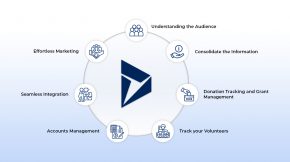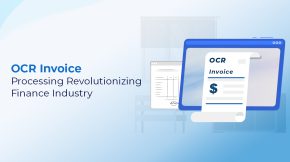Dynamics 365 Common Data Model— A beginner’s guide
It’s 2024. Data is definitely one of the most beneficial asset for businesses across the globe. However, managing and utilizing this data effectively can be challenging, especially when it comes from various sources and is stored in different formats.
This is where Microsoft’s Dynamics 365 Common Data Model (CDM) comes into play. Designed to streamline data management and enhance business processes, CDM is a powerful tool that every beginner should understand. This blog will help you know the basics of the Dynamics 365 Common Data Model and how it can transform your data management strategies.
What is the Common Data Service?
Data is the new oil. Everyone says that. Why not. Every business relies on data and the information we get from it for the decision-making process and other business functions to work. But the problem comes down to the vast amount of data and the diverse sources from where it comes.
Imagine having a unified data model that seamlessly integrates information from all your systems, readily available for analysis and application development, that’s Dynamics 365 Common Data Model.
Microsoft provides a cloud-based storage service known as the Common Data Service (CDS). Enables businesses to store and manage data securely for business applications. CDS is the core of the Dynamics 365 ecosystem, allowing for the storing of data in a standardized format. It serves as the backbone for apps such as Power Apps and Power BI, creating a unified data store that is simple to access and manage. The CDS goes beyond usual data storage, providing a platform that not only stores but also enhances data using business logic, process workflows, and security models.
What Is Dynamics 365 Common Data Model?
Dynamics 365 common data model is designed for easier data integration and administration across business processes and applications. It defines a standardized schema, which is a set of rules governing how data should be formatted.
This enables applications, regardless of origin, to understand and use the data effortlessly. CDM has a collection of data schemas (entities) that represent key business processes including sales, purchasing, customer support, and supply chain management. CDM improves communication and understanding across diverse applications and services by establishing a common data language. Adopting CDM enables organizations to break down data barriers, resulting in a more unified picture of data and improved collaboration and decision-making.
Key Components of the Common Data Model
Entities: Entities are tables storing data about specific business objects, such as products, customers, or sales transactions. Each entity is defined by a set of attributes (fields) that describe the data.
Attributes: Attributes are the individual pieces of data that define an entity. For example, an entity representing a customer might have attributes such as name, email, and phone number.
Relationships: Relationships define how entities are connected to each other. For example, a relationship might link a customer entity to an order entity, showing that the customer has placed an order.
Schemas: Schemas are the structure of the data within the CDM. They define the entities, attributes, and relationships in a standardized format.
How Does Dynamics 365 Common Data Model Work?
The Common Data Model works by establishing a collection of standardized data definitions and relationships. These definitions are divided into entities, which are groups of data fields that describe a business notion (such as a customer, product, or order). When an application is created on Dynamics 365, it can use these pre-defined entities to ensure that the data used is compatible with other applications in the ecosystem.
CDM runs on top of the Common Data Service, which allows data from diverse sources to be ingested, stored, and managed. Applications can then communicate with this data via CDS, guaranteeing that they all have the same source of truth. This removes data silos, lowers duplication, and improves overall data integrity throughout the organization.
Whether you’re working with custom applications or a Dynamics 365 landscape, CDM provides an ideal solution to manage data across apps with overlapping entities. For example, CDM ensures that any changes to an ERP application are smoothly paralleled in other applications.
Why Use the Common Data Model?
Standardization: The CDM provides a consistent and standardized way of organizing and managing data. This makes it simpler to integrate data from different sources and ensures consistency across the organization.
Interoperability: By using a common data model, businesses can seamlessly integrate their Dynamics 365 applications with other Microsoft services and third-party applications, facilitating better data flow and collaboration.
Efficiency: The CDM reduces the time and effort required to manage and utilize data. It provides predefined schemas for common business entities such as accounts, contacts, and sales orders, allowing businesses to pay attention on their core activities rather than data management.
Scalability: The CDM is designed to scale with your business. As your data needs grow, the model can be extended and customized to accommodate new requirements without disrupting existing processes.
Practical Applications of the Common Data Model
Customer Relationship Management (CRM): Unify customer data from different sources to provide a 360-degree view of each customer, enabling personalized marketing, sales, and service experiences.
Enterprise Resource Planning (ERP): Standardize and streamline data across your ERP systems to improve operational efficiency and decision-making.
Business Intelligence (BI): Leverage standardized data to generate accurate and insightful reports and dashboards, helping you make data-driven decisions.
Automation: Automate business processes by integrating data from various sources, reducing manual effort and increasing productivity.
Conclusion
The Dynamics 365 Common Data Model is a powerful tool to transform how businesses manage and utilize their data. By providing a standardized and scalable framework, the CDM enables seamless integration, improved efficiency, and better decision-making. Whether you are just starting with Dynamics 365 or looking to optimize your existing data management practices, the Common Data Model offers a solid foundation for achieving your goals.
At Beyond Key, we specialize in helping businesses harness complete potential of Microsoft Dynamics 365 and the Common Data Model. Contact us today to learn how we can assist you with this powerful tool to drive your business forward.












